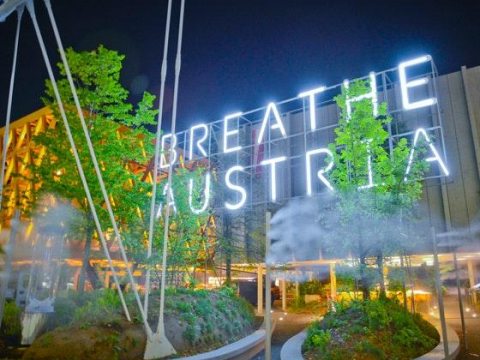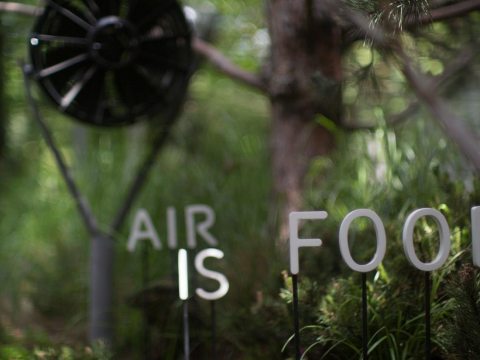The concept
breathe.austria creates a natural ecosystem and highlights its processes and performance. Conceived as a space for observing and thinking about causal relationships, scientific expertise meets urban visions, ecological research, ecosophy and the artistic presentation of knowledge, and is then transformed into site-specific sensory experiences. The forest serves as a vehicle for the leitmotif "Air and Climate in the 21st Century", and as an experimental space for artistic and scientific work. The Austrian pavilion stimulates the senses, taking visitors on a journey of discovery that highlights the importance of air as a key source of nourishment. Space, experience and exhibition merge into one. Throughout the six-month exhibition period, the pavilion will highlight the nature of air as a shared resource and provide a networking space where knowledge can be generated and shared.
The architecture
The Austrian pavilion in Milan unites buildings with the natural environment. Featuring an extensive replanted forest area covering 560 m2, breathe.austria's multi-layered sensory experience focuses on our relationship with the environment and the climate.
The forest
The vegetation that makes up the miniature forest has a total leaf surface area (i.e. transpiration surface area) of around 43,200 m2 and generates 62.5 kg of fresh oxygen per hour - enough for 1,800 people - making it a"photosynthesis collector" that contributes towards the global production of oxygen. Inside the pavilion this effect is supported by evaporative cooling - but without air-conditioning systems. This replicates the atmosphere of a dense forest in Austria using comparatively natural means that rely on the cooling effect produced by the plants' evapotranspiration. On a sensory level, the end result differs significantly from the air and climate in Milan and can thus actually be felt by visitors.
Emphasis on natural resources
The planting of trees over the entire exhibition area provides an excellent case study for urban settings, as it demonstrates how the integrated use of landscapes can supply urban inhabitants with sufficient oxygen and cooling air. This in turn provides an opportunity to draw attention to Austria's policy of sustainable and multifunctional forest management or conversely to the decline in the global tree population.
NUSSLI Adunic was responsible for the complete installation, the project management as well as the disassembly of the pavilion.









